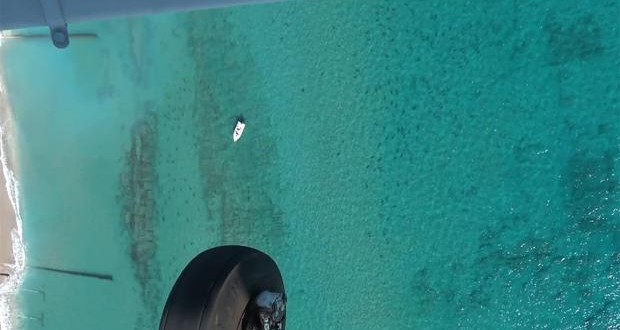There are thousands of migrating sharks swarming just off Florida’s coastline, which in 2015 became the “shark attack capitol” of the US. This new aerial footage has revealed the sheer scale of the predator population.
Florida Atlantic University biologist Dr. Stephen Kajiura studies the blacktips and their migration patterns down the Atlantic Coast. He shot this video after waiting weeks for the blacktips to make an appearance.
Dr. Kajiura said the sharks typically come to south Florida in mid-January.
This year, he said they came much closer to February.
“We’ve had an unusually warm winter, and as a result it may be the water was sufficiently warm where they were so there may not have been motivation to move south to warmer waters,” Dr. Kajiura said.
He added that the blacktip sharks normally go back up north at the end of March, but this year the late migration south may push back that date.
Blacktip sharks usually get up to six feet in length and are very skittish, Dr. Kajiura said.
“The blacktips in general, if you jump in the water, they’re going to take off. So the chances of being bitten are pretty small,” he said.
This year, the FAU scientist said that many of the blacktips are hanging out off the coast of Palm Beach County.
“I fly from Miami, all the way up to Jupiter. The vast majority of sharks are found from Palm Beach to the Jupiter Inlet area. We don’t find many south of there, at least we haven’t so far,” he said.
It’s not clear why they’re congregating in that area, but Kajiura said it may be because of the habitat found off the coast.
“You have some more exposed rock on the sea floor in the Palm Beach area and further north and you often see the sharks sheltering in those rocky areas,” he said.
Dr. Kajiura said that sharks typically mate up north before coming south. He adds that of the 32 sharks tagged so far, all of them have been males.
He said the pregnant female sharks may not have wanted to travel as far.
The goal is to tag a total of sixty sharks. Dr. Kajiura performs aerial surveys once a week, then tags sharks from a boat weekly as well.
He hopes to one day connect the tagged sharks to social media sites so people at home can track their travels as well.
https://www.youtube.com/watch?v=_gZzRGaZtgQ
BLACKTIP SHARK REPRODUCTION
The Blacktip shark is viviparous (the embryo develops inside the body of the mother, as opposed to outside in an egg) and has a yolk-sac placenta with 1 – 10 pups per litter. The gestation period is around 10 to 12 months and females are thought to breed every other year.
BLACKTIP SHARK CONSERVATION STATUS
The Blacktip shark is classed as ‘Vulnerable’. Its flesh is used fresh, dried or salted for consumption, its hide is used for leather and its liver for oil. It is occasionally taken as a game fish and often by shore anglers. It has not been indicated in unprovoked attacks against humans but is potentially dangerous.
Agencies/Canadajournal
 Canada Journal – News of the World Articles and videos to bring you the biggest Canadian news stories from across the country every day
Canada Journal – News of the World Articles and videos to bring you the biggest Canadian news stories from across the country every day




I deplore the use on the words ‘dangerous’ and ‘shark attack capital’, especially given the person giving the expert explanation specifies these sharks are skittish and risks of being bitten are very small. Please stop pandering to peoples’ paranoia and creating fear simply in the hopes of getting more clicks.